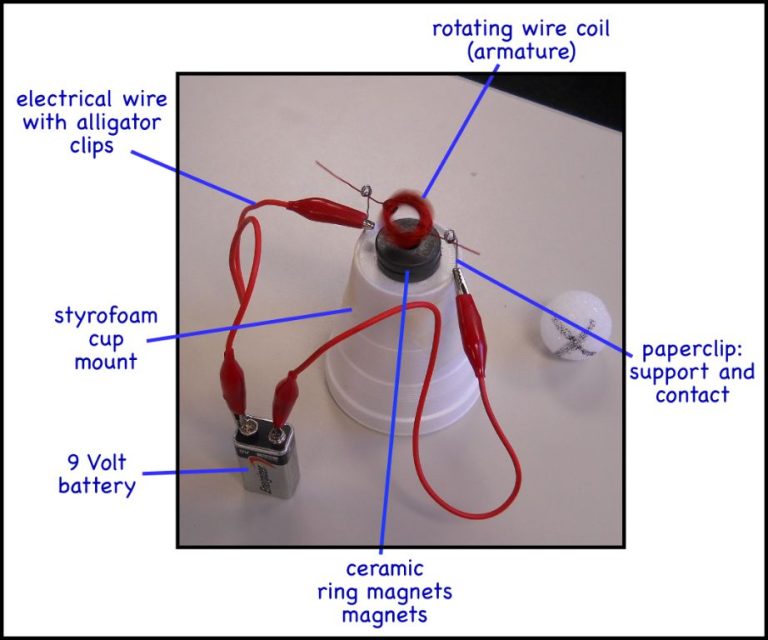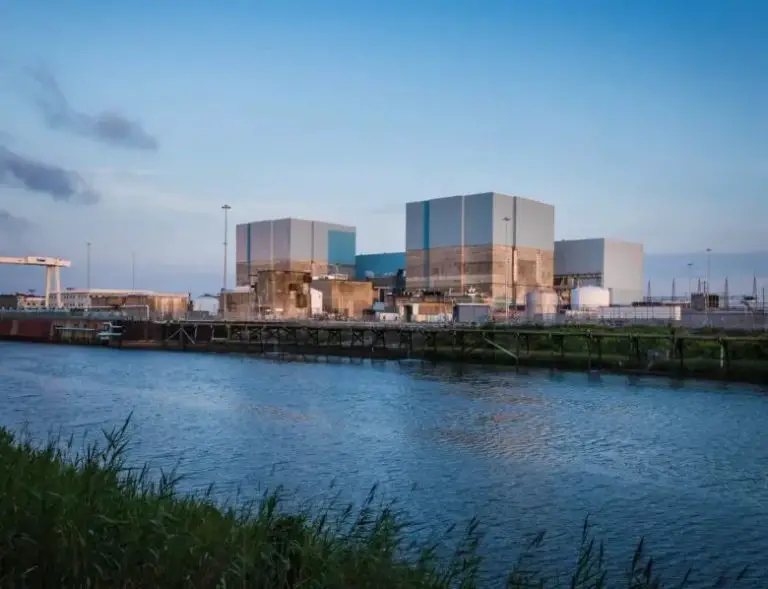How Is Light Absorbed In Plants?
Introduction
Photosynthesis is the process plants use to convert sunlight into chemical energy. This chemical energy is stored in the bonds of glucose molecules, which plants can break down to fuel growth and other functions. Light absorption is a critical first step that enables this energy conversion.
During photosynthesis, plants use sunlight to power a series of chemical reactions. These reactions convert carbon dioxide and water into energy-rich glucose molecules and oxygen. Without light, plants cannot perform photosynthesis and produce the food they need to survive.
Light absorption takes place in specialized cell structures called chloroplasts. Chloroplasts contain green pigments called chlorophyll which can absorb sunlight. When light is absorbed, it excites electrons in the chlorophyll molecules initiating a series of electron transfers. This electron transport chain generates chemical energy that is used to make glucose.
The visible light that plants utilize ranges in wavelength from 400-700nm. Different pigments can absorb light energy at different wavelengths across this range. The absorption spectrum of all the pigments together allows plants to efficiently harness the energy of visible sunlight for photosynthesis.
Photosynthetic Pigments
Plants contain light-absorbing molecules called pigments that capture light energy for photosynthesis. The three main types of photosynthetic pigments are chlorophyll, carotenoids, and anthocyanins.
Chlorophyll is the primary pigment responsible for photosynthesis. It absorbs blue and red light, reflecting green light which gives plants their green color. There are several forms of chlorophyll, with chlorophyll a being the most important for photosynthesis. Chlorophyll captures light energy and uses it to drive the light-dependent reactions of photosynthesis.
Carotenoids are orange, yellow, and brown accessory pigments. They absorb wavelengths of light that chlorophyll cannot capture, broadening the spectrum of light that can drive photosynthesis. Common carotenoids include beta-carotene and xanthophylls. Carotenoids also protect the photosynthetic machinery from damage by excess light.
Anthocyanins are water-soluble pigments that appear red, purple, or blue. They help attract pollinators and protect plants from intense sunlight by absorbing green and yellow light. Anthocyanins occur mainly in leaves, stems, roots, and flowers, and their concentrations increase in response to environmental stresses.
Chlorophyll
Chlorophyll is a green pigment found in the chloroplasts of plants and algae. It is essential for photosynthesis as it absorbs light energy. The basic structure of chlorophyll is a porphyrin ring with a magnesium ion at its center. Attached to the ring is a long hydrophobic tail that anchors the molecule into the thylakoid membrane inside the chloroplast. There are several types of chlorophyll, but chlorophyll a and chlorophyll b are the primary ones found in higher plants and green algae.
Chlorophyll a absorbs violet-blue and orange-red wavelengths of light. This captures energy that is used in photosynthesis. Chlorophyll b absorbs blue-green and yellowish-green light, complementing chlorophyll a by expanding the wavelength range used in photosynthesis. The different absorption spectra allow plants to absorb light energy across a wider range of wavelengths. When chlorophyll a absorbs light, an electron in the porphyrin ring attains a higher energy state. This excited electron is then transported via an electron transport chain to drive the biochemical reactions of photosynthesis. Therefore, chlorophyll’s unique structure and light-absorbing capabilities are essential for harvesting energy from the sun to power the process of photosynthesis in plants and algae.
Carotenoids
Carotenoids are another group of pigments found in plants that absorb light for photosynthesis. There are over 600 known types of carotenoids, though the most common are beta-carotene, lutein, and xanthophylls.
The structure of carotenoids consists of a long chain of conjugated double bonds and rings. This structure enables carotenoids to absorb excess energy from light that chlorophyll cannot capture, specifically blue and green light wavelengths.
Carotenoids play several important roles in plants. Their broad light absorption spectrum allows them to transfer the energy to chlorophyll, enhancing photosynthetic efficiency. They also protect chloroplasts from damage by absorbing excess radiation. Additionally, carotenoids give many plants their bright yellow, orange, and red colors, which attract pollinators and seed dispersers.
When animals consume carotenoid-rich plants, these pigments are incorporated into their tissues and play important roles in their health and vision. For example, beta-carotene is converted to vitamin A, while lutein and zeaxanthin protect the eyes from UV and blue light damage.
Anthocyanins
Anthocyanins are a class of water-soluble pigments that appear red, purple or blue in color. They belong to a parent class of molecules called flavonoids and are found in all tissues of higher plants. Anthocyanins play an important role in absorbing light for photosynthesis and also act as powerful antioxidants within plant cells.
Structurally, anthocyanins consist of glycosylated polyhydroxy and polymethoxy derivatives of 2-phenylbenzopyrylium or flavylium salts. Their structures enable them to absorb light most strongly in the blue and green regions of the visible spectrum, which complements the absorption of green light by chlorophyll. This allows anthocyanins and chlorophyll to work together in harvesting light energy.
Functionally, anthocyanins serve two key roles in plants. First, their broad absorption of blue-green light allows them to assist chlorophyll in absorbing radiant energy for photosynthesis. This is especially important in leaves shaded or buried deep in the canopy. Second, the antioxidant properties of anthocyanins allow them to protect plant cells from damage by reactive oxygen species produced during photosynthesis. By performing these critical functions, anthocyanins facilitate efficient photosynthesis in plants even under challenging environmental conditions.
Light Absorption Process
The absorption of light energy is vital to photosynthesis. Inside the chloroplasts of plant cells are pigments called chlorophylls and carotenoids. When light shines on a leaf, these pigment molecules absorb certain visible wavelengths (colors) of light.
The most abundant chlorophyll pigment, chlorophyll a, strongly absorbs red and blue light. Carotenoid pigments absorb blue and green light. By absorbing specific wavelengths of visible light, the pigments create a balanced light absorption capacity across the full visible spectrum.
When pigment molecules absorb a photon of light, the photon’s energy excites an electron in the pigment molecule to a higher energy state. So light energy is initially converted into excited electronic states within the pigments.
The excited electrons are then transported downstream through an electron transport chain, which generates chemical energy in the form of ATP and NADPH. This chemical energy is used to power the reactions of photosynthesis.
So in summary, light absorption by pigments converts light energy into excited electrons, which are then converted into chemical energy that can drive photosynthetic processes.
Wavelengths
Different pigments absorb light most efficiently at different wavelengths. The most important pigments involved in photosynthesis are chlorophylls, which absorb violet, blue, orange and red light. Carotenoids absorb in the blue-green and violet range, while anthocyanins absorb blue-green to yellow light.
The absorption spectrum of chlorophyll shows peaks in the violet, blue and red regions, which correspond to wavelengths of 400-450nm and 600-700nm. Very little green light is absorbed, which is why plants appear green. Chlorophyll a absorbs wavelengths centered around 430nm (blue) and 662nm (red), while chlorophyll b has peaks at 453nm and 642nm.
Carotenoids have a more complex absorption pattern across the 400-500nm range. Different carotenoids absorb slightly different wavelengths, working together to broaden the spectrum of light that can drive photosynthesis. Anthocyanins absorb a range of blue, green and yellow light in the 400-600nm range.
By containing multiple pigments with overlapping absorption ranges, plants are able to absorb light across much of the visible spectrum for use in photosynthesis. The different pigments work together to allow efficient light harvesting.
Photon Excitation
When light hits the pigment molecules in a plant leaf, the energy from the light is absorbed by electrons in the pigment molecules. The energy causes the electrons to move to a higher orbital or excited state. This excitation of electrons to higher energy levels is called photon excitation.
The incoming photons provide energy in discrete packets. When a photon hits a pigment molecule, if the photon has the exact amount of energy to excite an electron in the molecule to a higher orbital, the photon will be absorbed. Its energy causes the excitation of the electron to a higher energy level, leaving a “hole” or gap where the electron used to be in its ground state orbital.
The excited electron is unstable at this higher energy level and will soon relax back down, emitting a photon and heat energy. The released photon can be absorbed by another pigment molecule, causing another excitation. This passing on of energy allows the light energy to travel along the electron transport chain, providing energy for photosynthesis.
Electron Transport
The light energy absorbed by chlorophyll drives a process called electron transport. This takes place in specialized proteins called photosystems. There are two main photosystems involved in electron transport during photosynthesis – Photosystem I and Photosystem II.
When a photon hits chlorophyll, it energizes an electron in the chlorophyll molecule. The energized electron is then passed to an acceptor molecule, which passes it to the first photosystem. The electron travels through a series of electron carrier molecules, gradually losing energy. Some of this energy is used to push hydrogen ions across a membrane, creating a concentration gradient. The electron continues through the second photosystem, where it receives another photon boost of energy. More hydrogen ions are pumped across the membrane. Finally, the electron ends up with enough energy to combine with a hydrogen ion and NADP+ to form NADPH.
This whole electron transport process results in the creation of a proton gradient, which drives the synthesis of ATP. The NADPH and ATP provide the chemical energy needed to fix carbon dioxide into sugar molecules.
Chemical Energy
The light energy absorbed by chlorophyll is converted into chemical energy carriers like ATP and NADPH through a series of reactions known as the light reactions. The excited electrons from photosystem I are used to produce NADPH, while electrons excited in photosystem II contribute to proton gradient formation and ATP synthesis. ATP and NADPH provide the chemical energy that is used to fix carbon dioxide into carbohydrates in the Calvin cycle reactions. So the light energy harvested by chlorophyll is ultimately converted into chemical bonds within carbohydrate molecules like glucose. This stored chemical energy can then be used by the plant to power cellular processes and growth.





